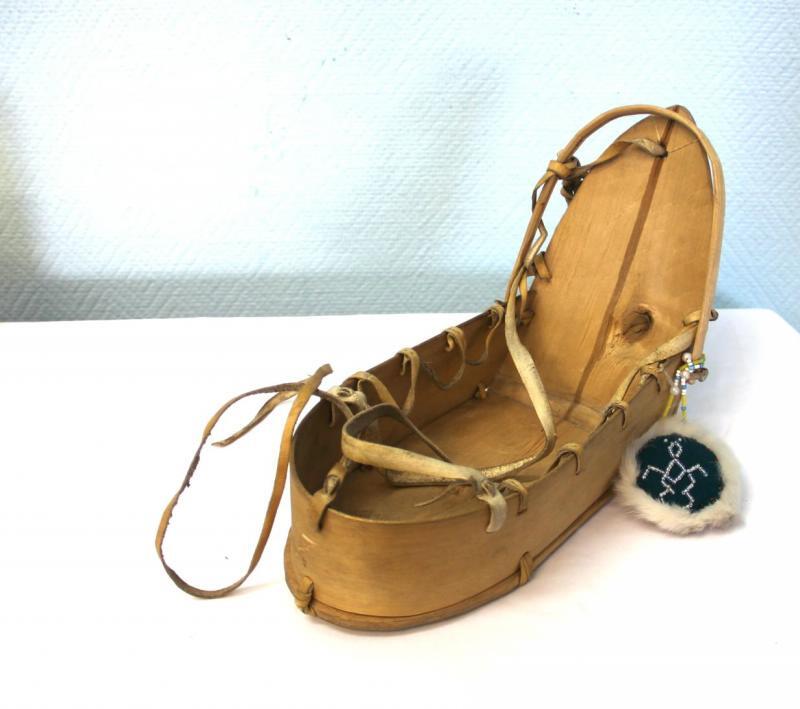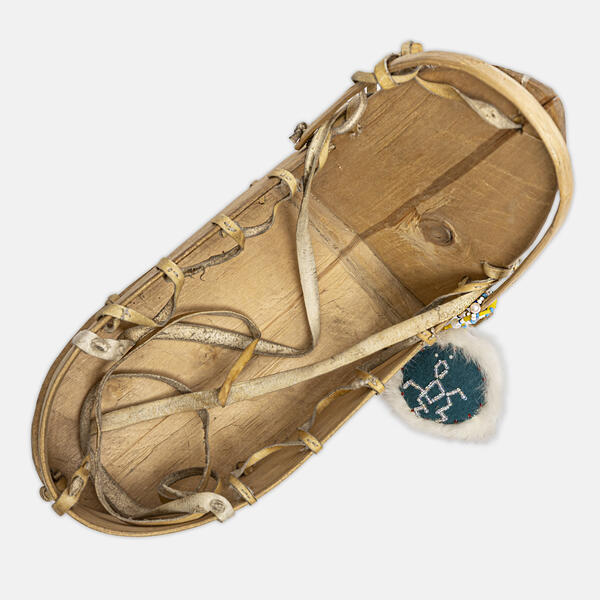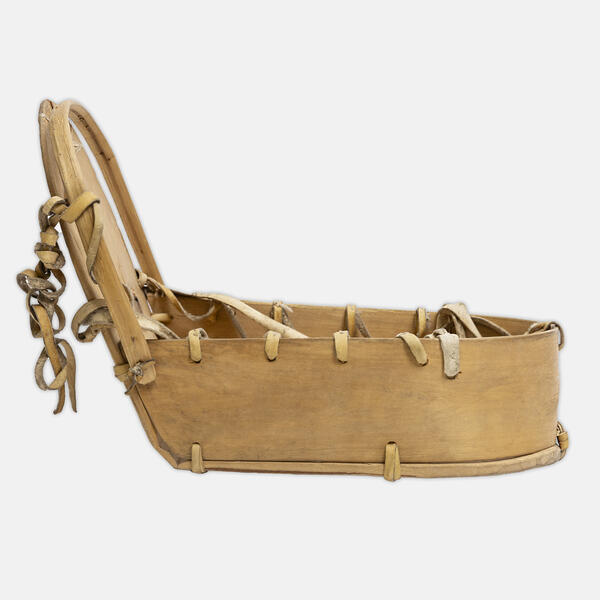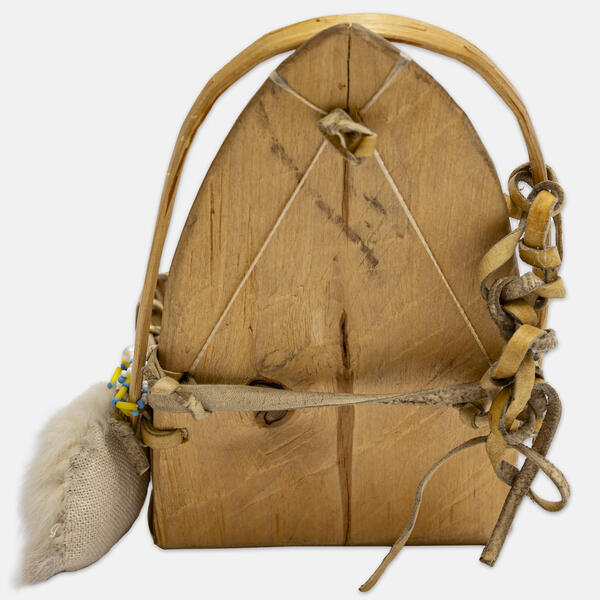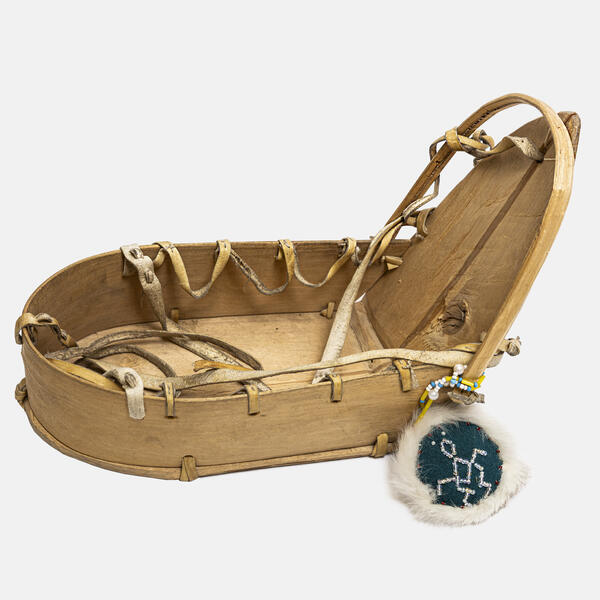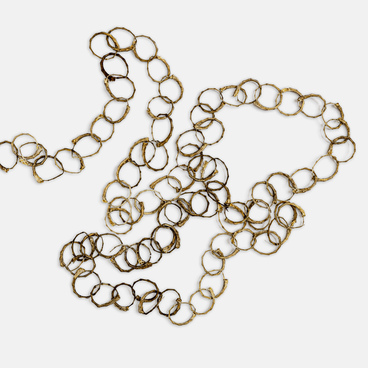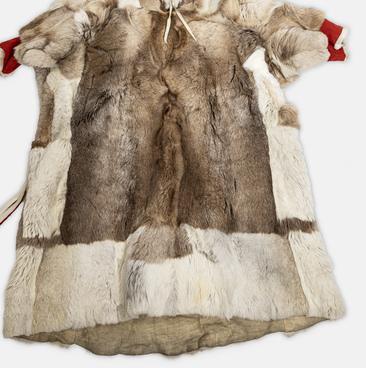This is a wooden toy cradle, an exact copy of an actual-sized one. Traditionally, the Khanty made two cradles for a baby — a night cradle and a day cradle. The former is made of birch bark and is only designed for sleeping, while the latter is made of wood, has a backrest, and is also used for lying in a semi-sitting position and looking around. For the child’s comfort, the backrest is lined with soft deerskin.
The bottom and backrest of the toy cradle are made of a single piece of birch. The walls are curved according to the shape of the cradle’s bottom and attached to it with seven leather straps. On the right side of the back, there is a dark brown trace of a knag. On the left side of the headboard, there is a strip of rovduga (reindeer suede) designed to secure the doll in the cradle. A wooden hoop is attached to the side of the cradle. Usually, it is covered with a scarf. It serves as a canopy and protects the baby from light and insects. On the right side of the hoop, there is a pendant, an amulet for the baby.
The Ob Ugrians have a traditional approach to raising children. A boy is regarded as the future head of the household and breadwinner. With the help of adults, he must grow to be a man and develop endurance, courage, perseverance, diligence, and skills required to use tools and weapons. A girl is a future housewife and mother. She is taught to run the household, cook, and make clothes, footwear, and household utensils.
Girls play with dolls made of scraps and furs. They begin to sew their own dolls at the age of five. They keep sewing accessories — needles, thimbles, threads, beads, buttons, pieces of fabric, tendons for threads, and scissors — in a special bag which is an essential attribute of any woman. Under the guidance of women, they learn to sew national clothes for dolls and craft miniature household items, such as birch bark tableware, cradles, tables, sleeping bags, beaters, scrapers, and mortars and pestles for grinding flour from dried fish.
By the age of 12–14, a girl is supposed to master many traditionally female skills: dressing reindeer hides, suede, bird, animal, and fish skins, sewing clothes and footwear, weaving mats from meadow grass, making birch bark utensils, and cooking for the entire family.

